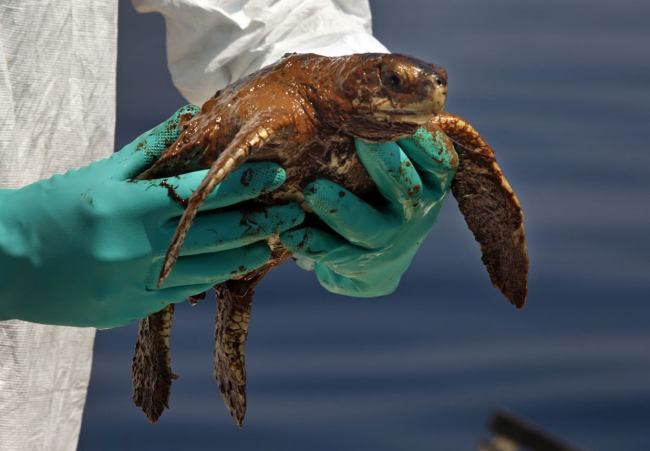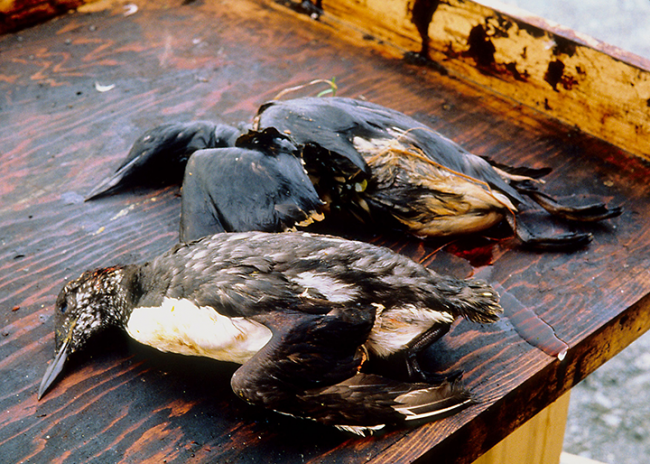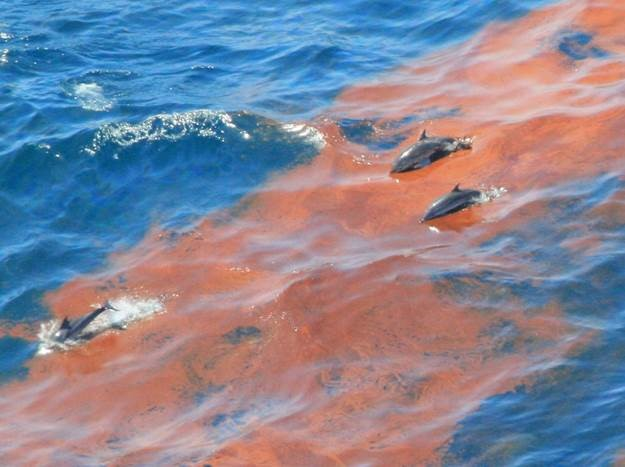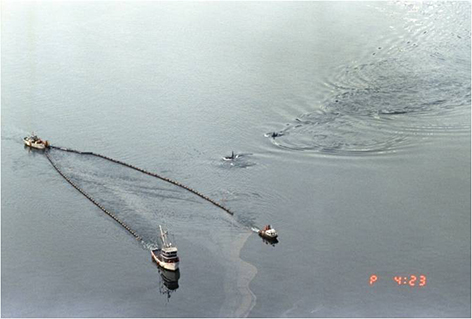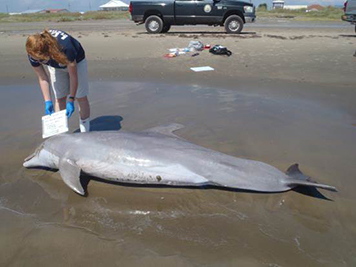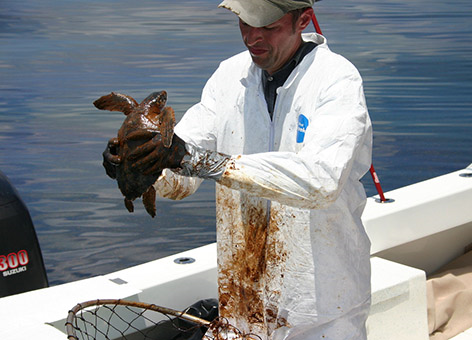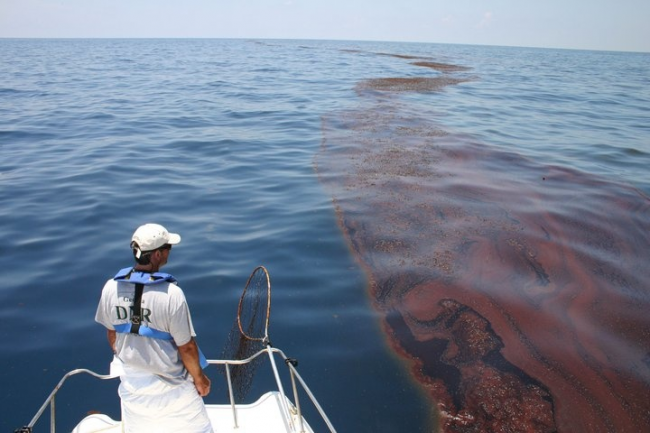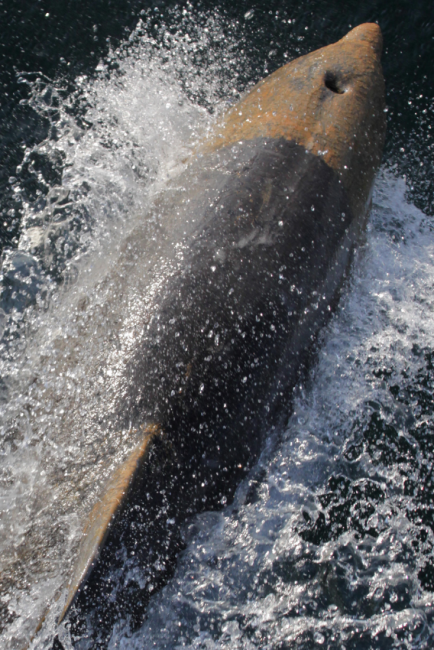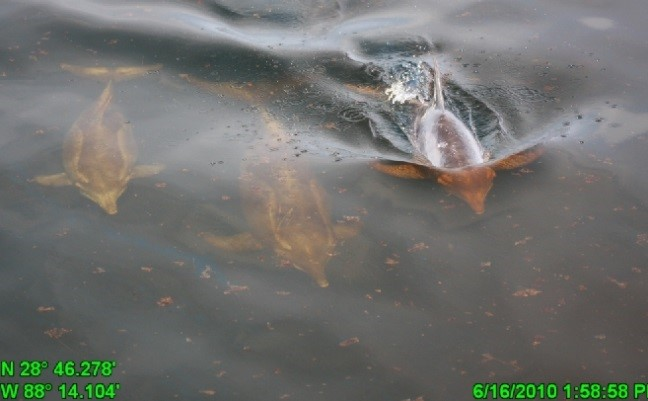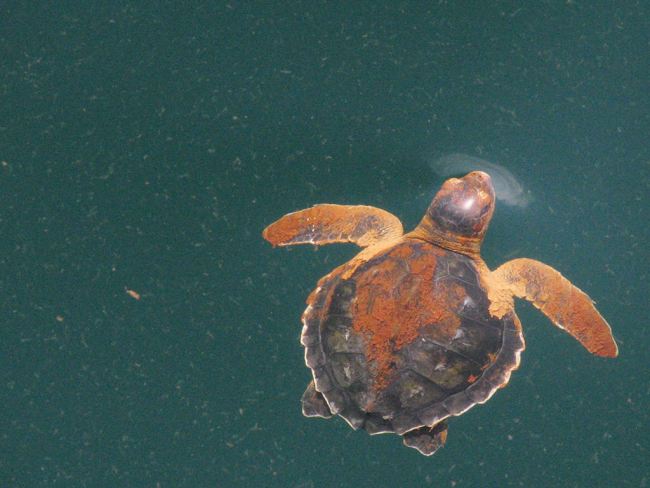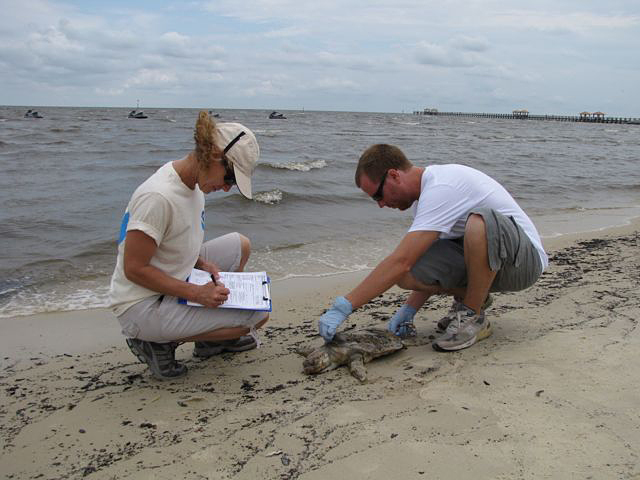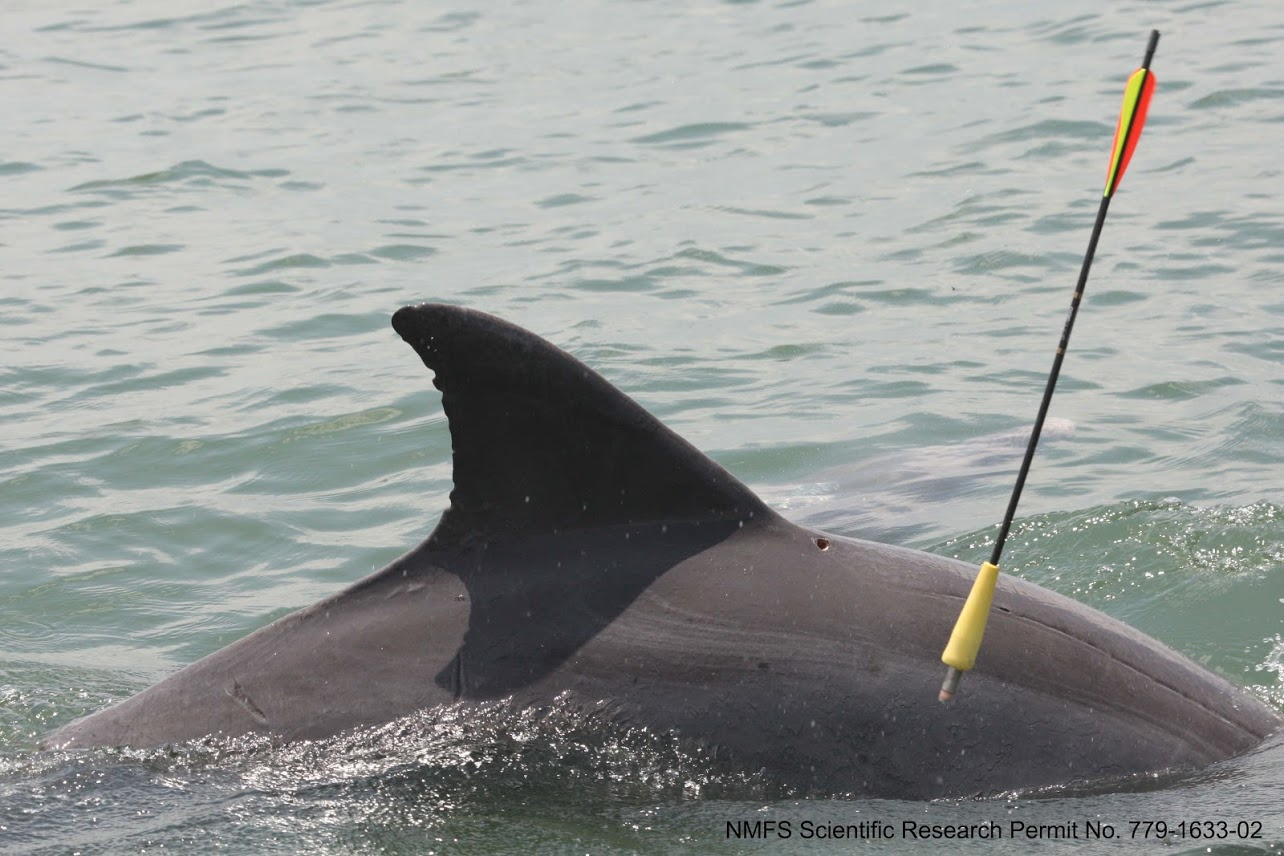2021 marks 30 years of NOAA’s Damage Assessment, Remediation, and Restoration Program (DARRP) working to hold polluters accountable for the impacts of oil spills, hazardous waste, and ship groundings in waterways. When oil spills and hazardous waste pollution impact protected species like sea turtles, whales, and dolphins, NOAA experts use leading science to assess the impacts and hold polluters accountable. We then work with communities to restore habitats that these species need to thrive. Learn more about our work on darrp.noaa.gov
Looking back on the largest U.S. marine oil spills of their times, the 1969 Santa Barbara spill, 1989 Exxon Valdez, and 2010 Deepwater Horizon, each disaster captivated the American public through images of beloved ocean creatures covered in oil.
During Deepwater Horizon, photographs of sea turtles and marine mammals—especially bottlenose dolphins—became visual symbols of the disaster playing out in the Gulf of Mexico.
However, with every disaster there is an opportunity to learn.
From this disaster came a wealth of data. Scientists learned more about the impacts of oil spills on sea turtles and marine mammals than ever before. All sea turtles and marine mammals are protected species, it’s illegal to harm them, so oil spills provide a rare opportunity to study how they are impacted and to bring those lessons forward to the next spill.
Learning from the response to the Deepwater Horizon and other spills, marine mammal and sea turtle scientists have joined with oil spill experts to document lessons learned regarding the best ways to protect, rescue, assess, and restore sea turtles and marine mammals impacted by oil. This information has been distilled into two NOAA technical memos:
-
Guidelines for Oil Spill Response and Natural Resource Damage Assessment: Sea Turtles.
-
Guidelines for Assessing Exposure and Impacts of Oil Spills on Marine Mammals
These documents provide practical guidelines for oil spill, marine mammal, and sea turtle experts to prepare for and quickly respond to oil spills that might impact these protected species.
Using Sound Science to Hold Polluters Accountable
America's marine resources are public resources, they belong to us all.
Just like a doctor diagnoses an illness before prescribing treatment, scientists assess environmental injury before planning restoration projects. The more accurate the Natural Resource Damage Assessment, the better equipped we are to reach settlements and fund projects that compensate for injuries from pollution.
The assessment methods outlined in the two technical memos are best practices to collect quality data after oil spills, hazardous waste spills and ship groundings, allowing NOAA and our partners to hold responsible parties accountable for injuries to marine mammals and sea turtles.
Experts at NOAA continue to learn from Deepwater Horizon and other past spills, work diligently with our partners, and advance sound science so when oil spill disasters strike we will be even better prepared to respond on behalf of sea turtles and marine mammals.
For more information on the two technical memos linked above, see these ArcGIS story maps:.
This blog was originally published on April 15, 2020.
On April 20, 2020, NOAA will join our state and federal partners in observing 10 years after the Deepwater Horizon oil spill — an incident that resulted in the tragic loss of human life and an unprecedented impact to the Gulf’s coastal resources and the people who depend on them. From March 30 to April 20, tune in as we go back in time to the day of our country’s largest marine oil spill, what’s happened since then, and how we’re better prepared for future spills. In our latest blog, learn more about how the spill impacted sea turtles and marine mammals.

